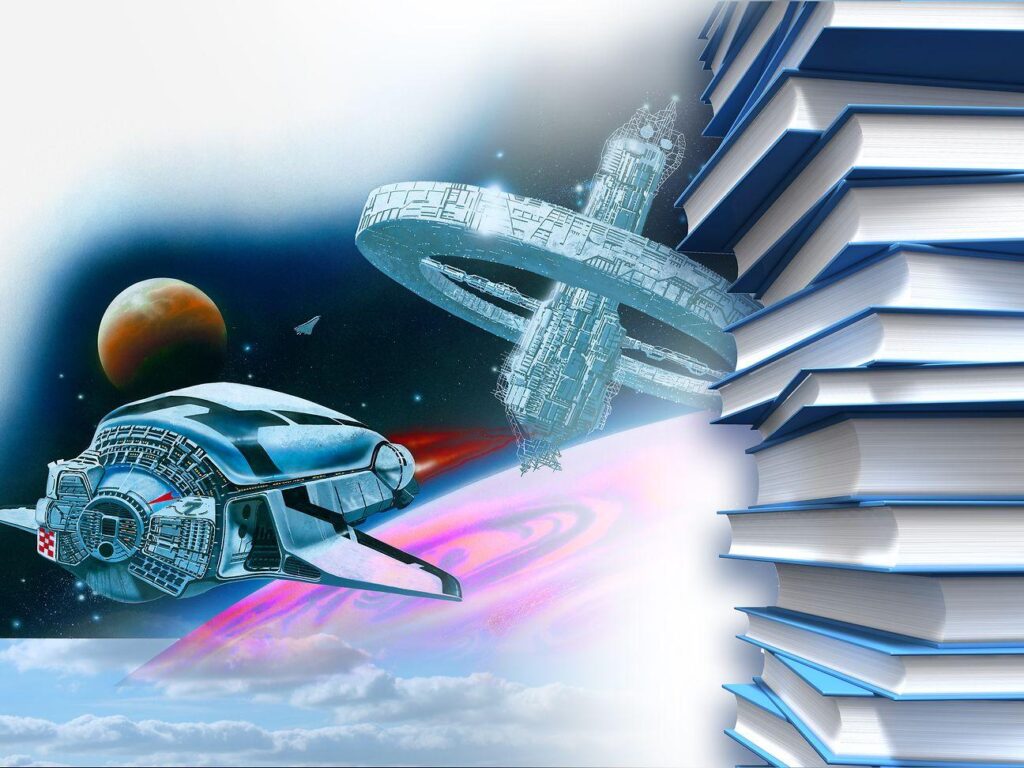In an era where technology continues to evolve at a breathtaking pace, the boundary between science fiction and reality grows increasingly blurred. The New York Times has recently launched an engaging feature that invites readers to test their knowledge on the astonishing predictions made by sci-fi literature and media-many of which have now materialized in our daily lives. From autonomous vehicles to space exploration breakthroughs, this interactive quiz offers a fascinating look at how imaginative visions of the past have shaped the technological landscape of today.
Exploring Science Fiction Innovations That Shaped Modern Technology
From wrist communicators to autonomous vehicles, many pivotal technologies first sparked imaginations in the pages of science fiction novels and films before becoming integral to daily life. Visionary authors like Arthur C. Clarke and Philip K. Dick didn’t just predict gadgets-they inspired engineers and innovators who transformed fantastical concepts into tangible breakthroughs. For instance, the idea of video calling, popularized on shows like Star Trek, has blossomed into ubiquitous platforms connecting billions worldwide.
Below is a snapshot of science fiction concepts that closely mirror modern technology:
- Artificial Intelligence: Once the domain of futuristic androids and sentient machines, now driving everything from search engines to self-driving cars.
- Wearable Tech: Inspired by sci-fi gadgets, smartwatches and health-monitoring devices blend functionality with style.
- Virtual Reality: Immersive worlds envisioned in mid-century books have matured into multi-billion-dollar industries.
| Science Fiction Icon | Real-World Technology | Year Introduced |
|---|---|---|
| Communicator (Star Trek) | Mobile Phones | 1973 |
| Neuromancer’s Cyberspace | Internet | 1990s |
| Asimov’s Robots | Industrial Robotics | 1960s |
Behind the Scenes How Visionary Writers Predicted Today’s Breakthroughs
Long before smartphones slipped into every pocket and artificial intelligence began to mimic human cognition, visionary writers sketched the frameworks of our modern world through speculative fiction. Their narratives, once dismissed as mere fantasy, laid the conceptual groundwork that inspired scientific innovators to transform fiction into fact. As these authors explored the ethical quandaries and societal shifts accompanying emerging technologies, they unknowingly offered blueprints for breakthroughs that would redefine industries and daily life alike.
Delving into classic and contemporary science fiction reveals recurring themes and inventions that bear uncanny resemblance to current technological achievements. Consider this quick overview of predictive concepts:
- Communicators: Devices akin to today’s smartphones appeared in mid-20th-century stories, facilitating instant global communication.
- Artificial Intelligence: From sentient robots to intelligent software, literature explored the potentials and pitfalls of AI decades before its actual rise.
- Virtual Reality: Immersive digital realms featured prominently in futuristic narratives, anticipating today’s VR ecosystems.
| Science Fiction Concept | Predictive Accuracy | Real-World Breakthrough |
|---|---|---|
| Tablet Computers | High | Apple iPad |
| Self-Driving Cars | Moderate | Waymo Autonomous Vehicles |
| Genome Editing | Low | CRISPR Technology |
This symbiosis between imagination and innovation underscores how today’s tech landscape owes much to yesterday’s writers, who dared to envision a future that scientists strive to realize.
Expert Tips for Identifying Science Fiction Ideas Poised to Become Reality
Visionary concepts in science fiction often tap into the pulse of ongoing technological trends and societal shifts. To pinpoint which ideas are on the brink of becoming reality, it’s crucial to observe emerging scientific breakthroughs and correlate them with imaginative narratives. For instance, ideas like autonomous vehicles and AI assistants transitioned from speculative fiction into tangible products due to parallel advances in machine learning and sensor technology. Recognizing the fine line where fiction inspires innovation involves looking beyond the fantastical, focusing instead on technologies with a transparent developmental pathway and practical applications.
Here are some key markers that signal the potential transition of sci-fi concepts into real-world innovations:
- Interdisciplinary research: Breakthroughs often emerge where different scientific fields converge, such as bioengineering combined with nanotechnology.
- Prototyping and testing: Concepts backed by functional prototypes accelerate from theory to market.
- Government and private investment: Funding patterns can indicate which ideas are being prioritized for development.
- Public and ethical discourse: Widespread discussion about the impact and feasibility of technologies often precedes mainstream adoption.
| Science Fiction Idea | Current Status | Notable Developments |
|---|---|---|
| Brain-Computer Interfaces | Emerging | Neural implants for medical use |
| Space Colonization | Conceptual | Private space flights expanding |
| Personal Flying Vehicles | Experimental | Urban air mobility prototypes |
| Quantum Computing | Developing | Commercial quantum processors |
Closing Remarks
As science fiction continues to inspire innovation and shape our understanding of the future, the line between imagination and reality grows ever thinner. The New York Times’ exploration of technologies once confined to speculative fiction now emerging in everyday life invites readers to reflect on how visionary storytelling has anticipated-and sometimes accelerated-scientific progress. Staying informed about these developments not only honors the creative minds behind them but also encourages a critical look at the implications of technology as it moves from page to prototype to commonplace.
